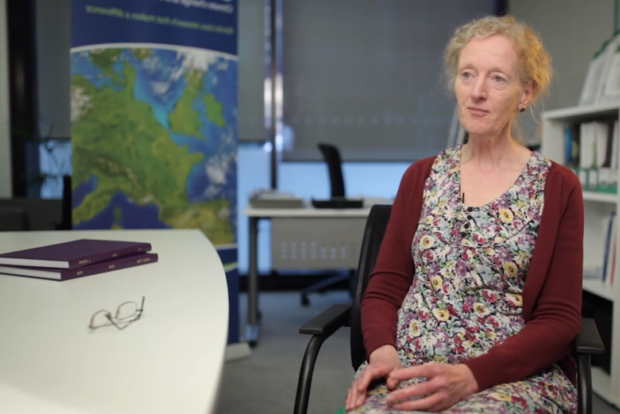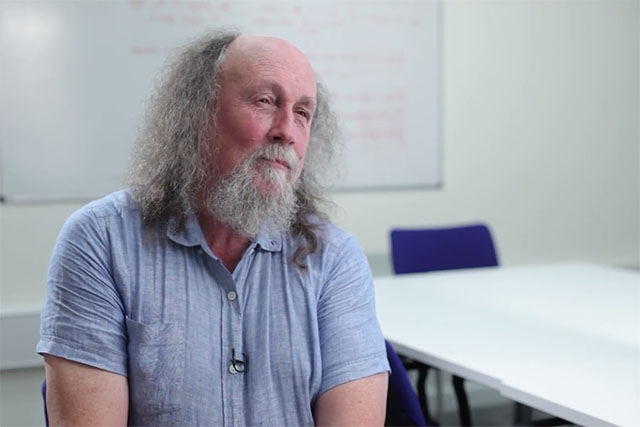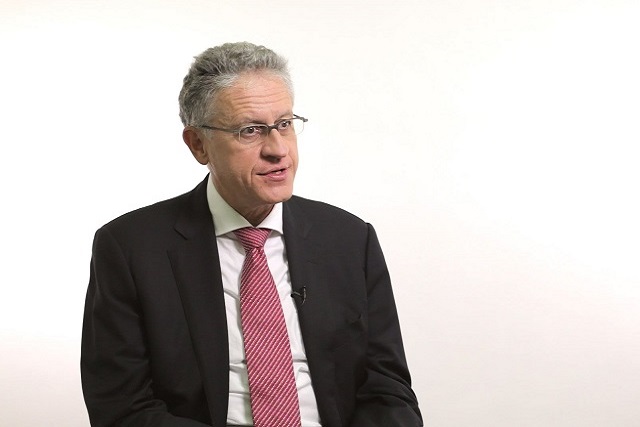Primary Production
Professor of Biosphere and Climate Impacts Iain Colin Prentice on evolutionary optimality, methods of measuring photosynthesis, and the role of chlorophyll in that process
videos | June 7, 2018
Primary production simply is photosynthesis. When we talk about photosynthesis on a large scale, we usually call it primary production. Specifically, we call it Gross Primary Production, which is the total amount of CO2 that is converted on a monthly or annual basis, that is converted from CO2 into sugars by plants. There’s also a term called Net Primary Production, which is about fifty percent of the Gross Primary Production. That’s the part that actually ends up in the tissues of the plants, because the rest actually has to be used up by the plant in a process called respiration, that returns CO2 to the atmosphere.

Primary production is obviously a very important process for life and for human activities, and agriculture. Primary production is obviously fundamental for our survival. It’s very interesting to know how much primary production there is, and where it is, and how it varies with environmental factors. One way of getting more information about primary production is by using information from space. Ever since the 1980s-s there have been satellites that are recording the reflectivity of the land surface. Chlorophyll – the light absorbing pigment – that is responsible for photosynthesis, because it is green, clearly it’s absorbing in the red, but it’s not absorbing in the near-infrared. As soon as there were satellites, instruments that were originally put for weather forecasting purposes, it was actually realized that by looking at the reflectivity in the red and in the near-infrared, and comparing them, you could actually get an index of the greenness, and therefore, the amount of chlorophyll on the ground. If you know the greenness and if you know the amount of incoming solar radiation in the visible bands that are using photosynthesis, then you can calculate the amount of energy that is absorbed by green plants. If you know that, that’s one of the key quantities that you need to predict photosynthesis.
I’m taking a new approach to the monitoring of a primary production from space. To do so I’m invoking the concept of evolutionary optionality. Using evolutionary optimality I can predict the ratio of the CO2 concentration inside these to the outside lines, which is needed in order to calculate photosynthesis. I need a couple of other quantities too. One of which is the so-called RuBisCO capacity, which is the basically amount of photosynthesis enzymes that are in the leaf and, therefore, are available to carry out photosynthesis. The other is the so-called Electron-Transport Capacity, which expresses the ability of leaves to translate light energy into chemical energy. There are those two processes that are necessary photosynthesis. My argument is that they have to be balanced in terms of investment. In other words, the plants, if you like two sides, how much is going to invest in the two functions. If you overinvest in one, then basically it’s wasting its carbon ,because then the process will be limited by the other. That is actually quite an old idea. It’s called the Coordination theory, but it turns out to have a lot of consequences.
Measurements of carbon dioxide and flux into and out of ecosystems can be made, are being made routinely at some hundreds of stations across the world. They’re made with a half-hourly time interval, so it’s an awful lot of data. The data can be analyzed in order to infer the Gross Primary Production, and we’ve done that at a bunch of these sites. We’ve looked at the monthly Gross Primary Production in many different environments, and we can do a good job, there’s no bias at all in our prediction, there are certainty some scatter, but we can do a good job, in fact slightly better than most of the models that are in the literature.





























